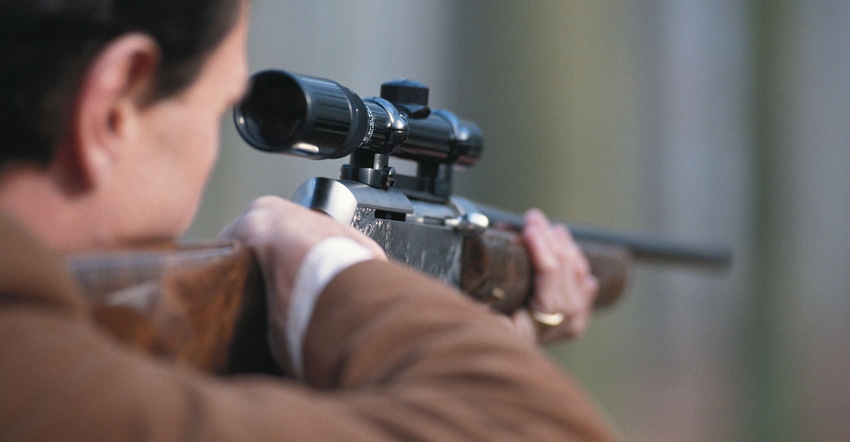It doesn’t take much technology for a shooter to wreak havoc. IoT technologies such as gunshot detection systems and connected video camera networks can vastly improve the response time of emergency responders.
July 28, 2016

Last year, there was roughly one school shooting per week and some 372 mass shootings in general in the United States. Connected technology could transform how we deal with these events. One trailblazer in this regard is the town of Ammon, ID, which has installed an innovative active shooter system in its Sandcreek Middle School. The software, known as ShotPoint from the startup Databuoy (McLean, VA), can notify emergency personnel quickly determine how many shooters there are, where they are, and what type of weapons they have. The technology has been proven to work effectively in a 2015 shooter simulation and won a National Institute of Justice contest intended to explore novel uses of high-speed internet to improve public services.
While many schools have IP cameras and sensors, Ammon’s Sandcreek Middle School—and a handful of schools across the United States—have also installed a network of acoustic sensors from Databuoy to detect gunshots. This technology can identify within a few feet where the shots were fired, capture an image of the shooter, and automatically share a map with a corresponding floor plan of the building with emergency personnel. It is also possible to identify which floor a suspect is on in buildings with multiple floors.
In the case of an active shooter, time is of the essence, but sometimes it can be an hour or even longer before police can identify where the shooter is within a building. Ballistics software, however, can detect where shots were fired nearly instantaneously. The use of live video feeds to monitor both shooters, and anyone who is hiding is also invaluable. Such video information can help first responders identify safe entry points into the building and identify any people who are wounded, explains James Chong, Founder and CEO of Vidsys, a company experienced with both video monitoring and gunshot detection.
Vidsys has also worked to integrate social media into their platform because aggressive or suicidal individuals sometimes post comments on such platforms that could help law enforcement better understand the nature of the attack and if other locations might be targeted. Social media messages can also be used to identify victims and witnesses.
Vidsys also recommends that schools and other buildings invest in access control systems that support identity management and the lockdown of entrances and exits. Such technology can be used to identify the shooter and prevent them from escaping or entering the vulnerable parts of the building.
The U.S.military has been studying this topic for years and have developed technology designed to identify an active shooter quickly. There is, for instance, the Boomerang system from DARPA and Raytheon BBN Technologies, which was developed in 2003 to pinpoint the position of a sniper. Mounted onto military vehicles, that technology was employed at the 2014 Boston Marathon after the 2013 bombing attack near the finish line of that race. Mid-Atlantic utility companies are also using the technology. Databuoy and other makers of gunshot detection systems rely on technology originally developed by the military.
The Ammon example points to another critical piece in helping in helping stop shooters: high-speed Internet. The city of Ammon had determined that it would be less expensive to install its own gigabit fiber network than it would be to lease high-speed connectivity. Once the network was up and running, the school was able to connect its IP surveillance system and video management system and Ammon's public safety dispatch and put them on a single virtual network. It takes seconds for the video images to be transferred to dispatch and an alarm to be sent to first responders along with a picture of the shooter.
It wasn’t long ago, however, that it simply wasn’t feasible to deploy dense networks of video cameras and other sensors such as gunshot detection technology. “But now with technologies such as 4G and wide area networks, satellite Internet, etc., these things are much more possible,” Chong explains. “In 2016 and beyond, it is about the integration and the technology. The network capability is accessible, and we are much IP and IT savvy. Before it used to be almost impossible for most organizations to deploy this kind of technology.”
About the Author(s)
You May Also Like



.png?width=300&auto=webp&quality=80&disable=upscale)


.png?width=300&auto=webp&quality=80&disable=upscale)